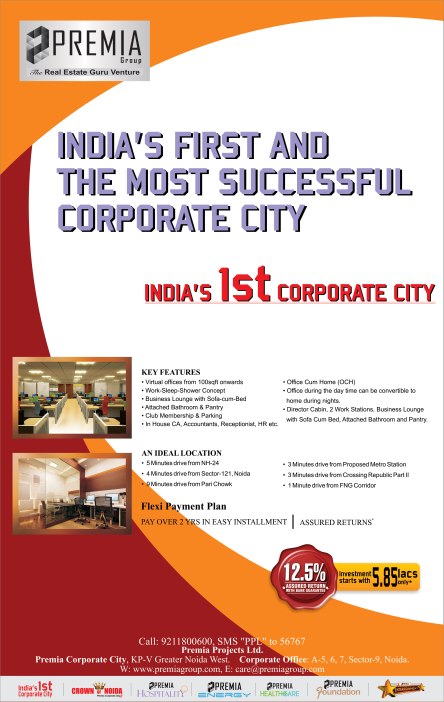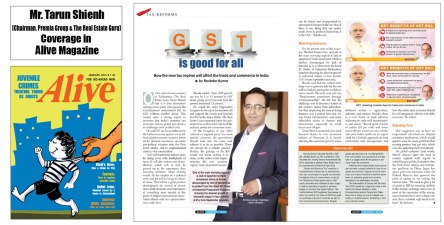Premia Energy Pvt. Ltd. serves customers across the solar value chain through world class products and services. In a short span of time since its inception has taken a dominating position in Solar EPC Services and Solar PV modules in India. Our products meet international standards including UL, IEC, ETL, CE, JET, JIS,CEC, FSEC,MCS, etc required to sell our products across the globe.
Solar power in India
With about 300 clear, sunny days in a year, India’s theoretically calculated solar energy incidence on its land area alone is about 5,000 trillion kilowatt-hours (kWh) per year (or 5 EWh/yr).
The solar energy available in a year exceeds the possible energy output of all fossil fuel energy reserves in India. The daily average solar power plant generation capacity over India is 0.25 kWh per m2 of used land area, which is equivalent to about 1,500–2,000 peak (rated) capacity operating hours in a year with the available commercially-proven technologies.
On 16 May 2011, India’s first 5 MW of installed capacity solar power project was registered under the Clean Development Mechanism.
The project is in Sivagangai Village, Sivaganga district, Tamil Nadu. In January 2015, the Indian government significantly expanded its solar plans targeting US$100 billion of investment and 100 GW of solar capacity by 2022.
Current status
Government-funded solar electricity in India was approximately 6.4 MW per year as of 2005. India is ranked number one in terms of solar electricity production per watt installed, with an insolation of 1,700 to 1,900 kilowatt hours per kilowatt peak (kWh/KWp).
25.1 MW was added in 2010 and 468.3 MW in 2011. As of 31 August 2015, the installed grid connected solar power capacity is 4,229.36 MW, and India expects to install an additional 10,000 MW by 2017 and a total of 100,000 MW by 2022.
Mr. Tarun Shienh

Mr. Tarun Shienh, who has diverse rich experience across real estate and financial services industry, is a renowned Real Estate Veteran and Visionary Entrepreneur. His forte lies in delivering world class high quality and innovative real estate projects in India, has facilitated “Premia Family” to incorporate Quality, Trust and Transparency ethics in Premia Group Companies. An MBA & Post Graduate Diploma Holder in Finance from Delhi University, Mr. Tarun has sharp Management & Financial Planning acumen which paved way for establishment of effective Business Processes during his tenure in respective organizations.
 Under his Strong Leadership and Extraordinary Vision, “Premia Group” is committed towards driving revenues and creating wealth for all key Stakeholders and Investors. Mr. Tarun Shienh is honored as “The Real Estate Guru” by Builders Council of India (BCI), Prestigious Semi Government Body PHD Chamber Of Commerce and Journalist Association of India (JAI).
Under his Strong Leadership and Extraordinary Vision, “Premia Group” is committed towards driving revenues and creating wealth for all key Stakeholders and Investors. Mr. Tarun Shienh is honored as “The Real Estate Guru” by Builders Council of India (BCI), Prestigious Semi Government Body PHD Chamber Of Commerce and Journalist Association of India (JAI).
The honor is quite interesting because never before in India any real estate developer or builder was given this kind of title for his excellence leadership or innovative approach.
He is the Chairman Of Assocham National Council on Luxury and the Director of Human Right Council of India a body working for the Social Causes.
He is the Mentor of Interior Design Students of JD Institute of Fashion Technology.
Solar Energy in India
The Indian solar story is much bigger than the story of one country and one technology. It is one of those game-changing developments that will have an impact on many aspects of our lives around the globe. It is the opportunity of a lifetime for India, for the global energy industry and for the climate. Here is why.
 In terms of its energy infrastructure, India is where China was 30 years ago: It needs to industrialize and for that it needs to massively expand its energy supply. The difference is: its choices are much better and clearer. A look at China shows the downsides of a coal-heavy strategy: severe pollution and enormous water-usage. At the same time, the costs of wind and solar have fallen to about 5-10% of what they were in 1990.
In terms of its energy infrastructure, India is where China was 30 years ago: It needs to industrialize and for that it needs to massively expand its energy supply. The difference is: its choices are much better and clearer. A look at China shows the downsides of a coal-heavy strategy: severe pollution and enormous water-usage. At the same time, the costs of wind and solar have fallen to about 5-10% of what they were in 1990.
India has the option of building its future energy infrastructure around solar and other renewables storage and smart grids rather than coal. This will be a choice that costs less, is much cleaner, saves water, provides a maximum of energy security and allows India to move to the forefront of key future technologies. Solar has enough potential to satisfy a vastly increased power demand in India.
It is also the opportunity of a lifetime for Indians that have no access to power (mostly in the villages) or face highly unreliable power (in many cities and industrial hubs). Solar now puts the power into the hands of consumers. It is quick and easy to install, making distributed power generation possible. In future, if the government won’t fix it, consumers will do it themselves.
A Lifetime Opportunity for Solor Energy in india
 India is a huge market, perhaps the largest future energy opportunity anywhere. As compared to China, it is also a much more open market. If solar will be the backbone of India’s future energy economy, that is good news for energy companies around the world: they can offer solutions in a market that is more transparent, more competitive and more environmentally friendly than thermal power.
India is a huge market, perhaps the largest future energy opportunity anywhere. As compared to China, it is also a much more open market. If solar will be the backbone of India’s future energy economy, that is good news for energy companies around the world: they can offer solutions in a market that is more transparent, more competitive and more environmentally friendly than thermal power.
This promise of the Indian solar market attracts an entirely new crowd of international investors, ranging from American and European utilities to the Japanese entrepreneur Masayoshi Son and his Softbank, to leading private equity investors and to the Russian oil major Rosneft – often shifting away from other energy businesses (oil, coal, nuclear). They are making investment bets as large as any in the global energy market. Solar is no longer a niche opportunity. It is mainstream and India has attracted the biggest investments this year.
A Lifetime Opportunity for the Global Climate
 Last but not least, solar in India is one of the biggest single measures to save the global climate.
Last but not least, solar in India is one of the biggest single measures to save the global climate.
On the other hand, if India can build a modern energy infrastructure around solar, it will be of enormous benefit to everyone. And think of the effect this would have on development conversations everywhere: it can show the way for other countries in a similar stage of development in Africa, Asia and the Middle East – altogether around half the world’s population.





 Under his Strong Leadership and Extraordinary Vision, “Premia Group” is committed towards driving revenues and creating wealth for all key Stakeholders and Investors. Mr. Tarun Shienh is honored as “The Real Estate Guru” by Builders Council of India (BCI), Prestigious Semi Government Body PHD Chamber Of Commerce and Journalist Association of India (JAI).
Under his Strong Leadership and Extraordinary Vision, “Premia Group” is committed towards driving revenues and creating wealth for all key Stakeholders and Investors. Mr. Tarun Shienh is honored as “The Real Estate Guru” by Builders Council of India (BCI), Prestigious Semi Government Body PHD Chamber Of Commerce and Journalist Association of India (JAI). In terms of its energy infrastructure, India is where China was 30 years ago: It needs to industrialize and for that it needs to massively expand its energy supply. The difference is: its choices are much better and clearer. A look at China shows the downsides of a coal-heavy strategy: severe pollution and enormous water-usage. At the same time, the costs of wind and solar have fallen to about 5-10% of what they were in 1990.
In terms of its energy infrastructure, India is where China was 30 years ago: It needs to industrialize and for that it needs to massively expand its energy supply. The difference is: its choices are much better and clearer. A look at China shows the downsides of a coal-heavy strategy: severe pollution and enormous water-usage. At the same time, the costs of wind and solar have fallen to about 5-10% of what they were in 1990. India is a huge market, perhaps the largest future energy opportunity anywhere. As compared to China, it is also a much more open market. If solar will be the backbone of India’s future energy economy, that is good news for energy companies around the world: they can offer solutions in a market that is more transparent, more competitive and more environmentally friendly than thermal power.
India is a huge market, perhaps the largest future energy opportunity anywhere. As compared to China, it is also a much more open market. If solar will be the backbone of India’s future energy economy, that is good news for energy companies around the world: they can offer solutions in a market that is more transparent, more competitive and more environmentally friendly than thermal power. Last but not least, solar in India is one of the biggest single measures to save the global climate.
Last but not least, solar in India is one of the biggest single measures to save the global climate. BHARAT KA PEHLA PROPERTY HELPLINE
BHARAT KA PEHLA PROPERTY HELPLINE